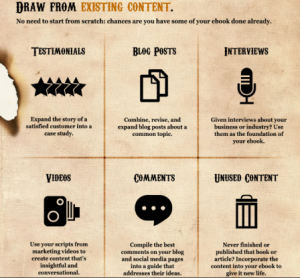Personally or professionally, and especially in sales, sometimes it’s not just about working harder, but about working smarter. You need strategies and solutions that make your work more effective – and not just ideas that require you put more time on the clock.
With so much at stake in the sales process – such as driving new lead generation, managing a prospect database and closing big accounts – any methods of making your efforts more cost-effective are worth implementing right away.
Here are five practices you should initiate immediately in your sales process to ensure your time and budget are well spent in driving more top-line growth for your business:
1. Capture Data Throughout The Process
Better data drives better decisions. To make your sales process smarter, you should first determine what information you need from every stage of the process. Systematically think through each stage of your sales process and identify where your sales team needs to learn and improve.
Then, with learning opportunities identified, start capturing the data on a regular basis. In order to ensure your data gathering becomes a habit (and not just a well-intentioned thought), employ tools like marketing automation software and sales analytics to generate your needed reports.
2. Create Feedback Loops In The Sales Process
Capturing sales data is the first step, but without putting this data in the right hands, it’s ultimately useless. You also need to establish feedback loops that ensure your marketing, sales and IT teams stay up-to-date on needed changes to your sales process.
For example, you might need to create a feedback loop that determines how many leads your average salesperson uses in a month. This may prevent you from buying a contact list that’s too extensive and that expires before your salespeople are able to properly work through it.
3. Design Your Team And Program Strategically
No two sales teams are exactly the same, so when it comes to your specific personnel, you need to design your team’s structure and organization to maximize their particular strengths and minimize their weaknesses. This often requires that you test and profile each member of your marketing and sales teams so that you understand each person on a more in-depth level.
You should also apply the same level of strategic planning to the other aspects of your sales process. Elements to consider for your company’s specific sales pipeline include:
- How often you should call each contact in your lead database
- How well leads are qualified by your marketing versus sales teams
- How industry verticals affect timing and price considerations (e.g., accountants are too distracted in March and April; retailers are too busy in December)
4. Keep Your Teams Talking
In many organizations, large information silos often exist between marketing, sales and IT departments, but those silos are costing you in both time and effort. Instead, you need to keep your teams talking to one another, sharing information and collaborating on everything from lead generation, prospect database management and closing deals.
Collaboration is only half of the effort though: You should also make sure that your teams are sharing information and insights in the form of data and tangible metrics. Subjective data exchanged over the water cooler isn’t as effective in the long run, especially when a prospect passes between several teams or when you have high turnover in sales personnel.
5. Develop Your Whole Sales Team (Not Just The Top Performers)
While it’s an easy temptation to reward only your top performers in terms of quantitative sales data, it’s a practice you should avoid if you’re trying to build a smarter sales process. Instead, pair a quantitative evaluation (e.g., hard revenue numbers) with a qualitative evaluation (e.g., their sales approach and team relationships) to gain a more holistic picture of each team member.
With a better idea of each person’s strengths and weaknesses, you’re better able to incentivize your overall team – and not just a single performer. Addressing the quality and dynamics of your team as a whole ensures that your sales process is working smarter from start to finish and isn’t being bottlenecked around a particular person or step.
The sales process is continually changing and becoming more complicated, so it’s time you start implementing practices like these to make your process smarter.
Discover how the Science of Sales™ helps your business realize more top-line growth without bogging you down with administrative costs and hiring hassles. Click below to start a conversation with a Sales Scientist™ from Invenio Solutions™ on how to make your sales process smarter than ever.
Business Articles | Business 2 Community
(459)





